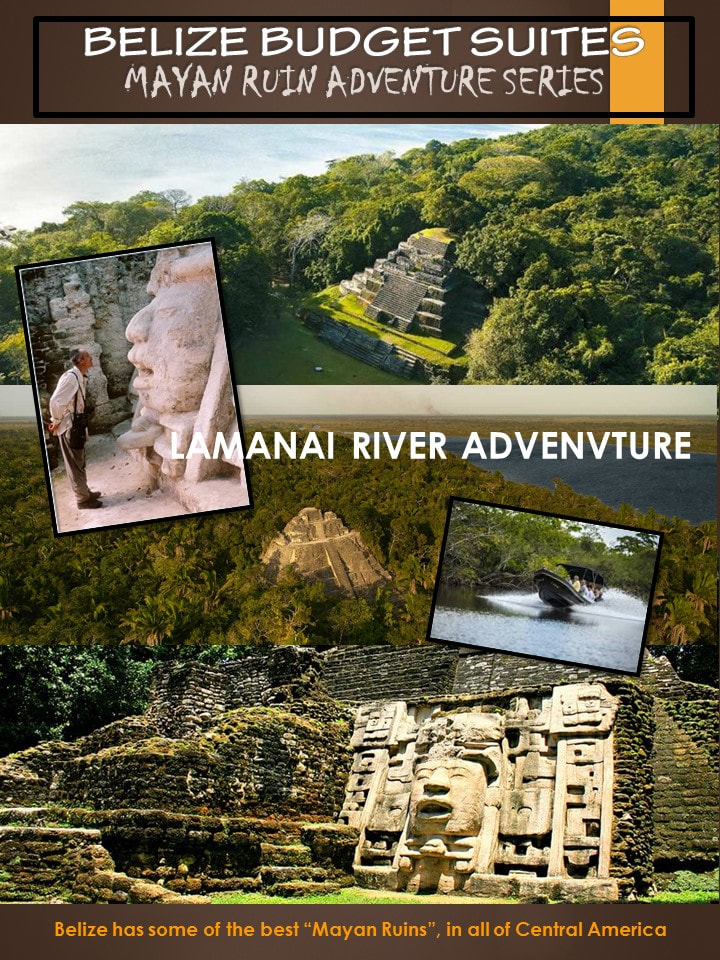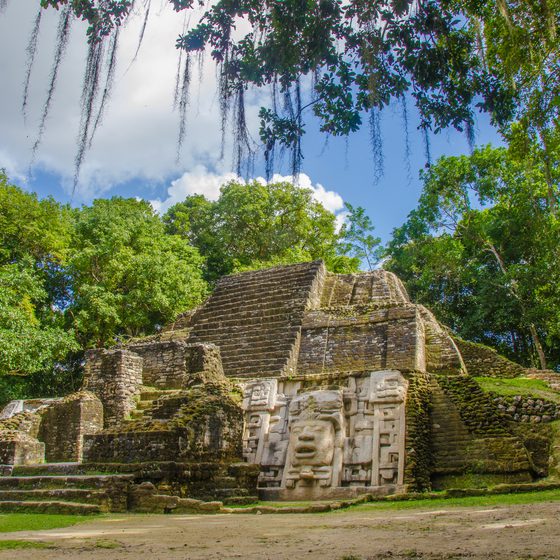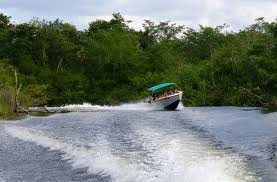Mayan Temple Adventures
Lamanai Mayan Ruins
Description: Lamanai is located on 950 acres (the site's core sits on about 12 square miles). Lamanai is one of the largest Maya ceremonial sites in Belize, including more than 100 minor structures, a ball court and about 12 major buildings, most notably the Temple of the Mask, the Temple of the Jaguar and the High Temple (so-called because of its height).
Unlike other Mayan sites that require a bit of a hike, Lamanai sits on the river’s edge. To reach the site itself, your guide will take you on a boat ride up the New River. You’ll be surrounded on all sides by sunning crocodiles, screeching howler monkeys and enormous Ceiba trees. The boat will dock at the park’s entrance, where you will spend an entire day exploring this site at your own pace. Lamanai's lay-out is quite different from most other Maya sites in Belize, which are generally organized in plazas around a ceremonial structure. However, at Lamanai, most ceremonial buildings were built along the west bank of the river and the lagoon, with residential structures to the north, west and south. Only about 5% of the site has been excavated, much remains buried or covered up by the jungle and bush. Archaeologists acknowledge, that many of the structures were built on top of other structures. Some of these older structures frequently or partially are exposed, leaving masks and other ornamental features (from older buildings), in odd places of newer buildings. Nowadays, visitors to Lamanai can enjoy the magnificence of its three major temples, each built during a different era. For the best view, climb the High Temple to peer across the vast canopy of the rainforest and get a bird’s eye view of the New River. If you’d like to see an impressive display of Mayan stone carvings, visit the Mask Temple, where you will see giant face carvings. There is also an onsite museum housing the great finds of the city, for you to look at. |
Lamanai Mayan Ruins
Lamanai is located in the northern Orange Walk district. Lamanai is on the banks of the New River Lagoon and the most interesting way to travel to the site is by means of water taxi up the river. The trip by river is also a nature-lover’s heaven for numerous species of water birds live along this rich and diverse waterway. You may even be lucky enough to view iguanas and crocodiles as they sun bathe on the river banks. There are also many species of flora and fauna to be seen at the Lamanai reserve.
Lamanai is the Maya word for “submerged crocodile.” The site’s name – “Lamanay” or “Lamayna” was recorded by Franciscan missionaries in the seventeenth century. It is one of the only sites retaining its original name and is among one of the largest Maya ceremonial centers. Most folks visit Lamanai by road through San Felipe, Orange Walk, rather than by boat. A “jungle cruise”, the road trip is an excellent chance to see birds, exotic plants and crocodiles. The site itself is even more spectacular; situated on a major trade route, Lamanai is one of the longest occupied Mayan cities and was inhabited for over two millennia. Lamanai has more than 719 mapped structures, including two 16th century Christian churches as well as an intact 19th century sugar mill. Due to the extraordinary length of time that Lamanai was occupied, one can explore several periods of Maya construction techniques, from the Classic Period to the Post Classic. Lamanai was the Maya Temple featured in the 7th episode of ABC’s The Bachelor in February 2012. |























